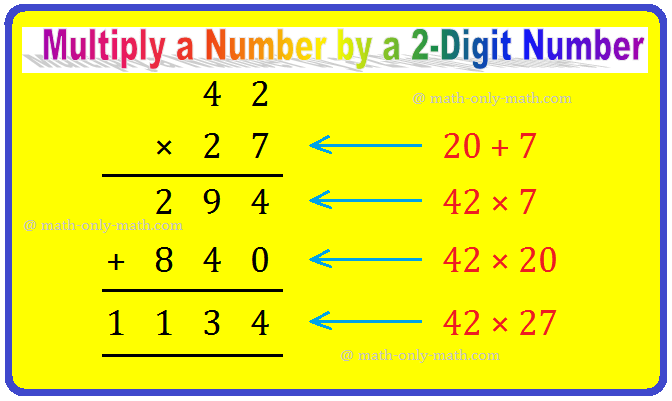Problems on Trigonometric Ratios of an Angle
We will learn how to solve different types of problems on trigonometric ratios of an angle.
1. Which of the six trigonometric function are positive for x = -10π/3?
Solution:
Given, x = -10π/3
We know that terminal position of x + 2nπ, where n ∈ Z, is the same as that of x.
Here, -10π/3 + 2 × 2π = 2π/3, which lies in the second quadrant.
Note: This process of finding a co-terminal angle or reference number results in an angle or number α, 0 ≤ α < 2π, so that we can determine in which quadrant the given angle or number lies.
Therefore, x = -10π/3 lies in the second quadrant.
Hence, sin x and csc x are positive while the other four trigonometric functions i.e. cos x, tan x, cot x and sec x are negative.
2. Express cos (- 1555°) in terms of the ratio of a positive
angle less than 30°.
Solution:
cos(- 1555°) = cos 1555°, since we know cos (- θ) = cos θ]
= cos (17 × 90° + 25°)
= - sin 25°; since the angle 1555° lies in the second
d quadrant and cos ratio is negative in this quadrant. Again, in the angle 1555° = 17 × 90° + 25°, multiplier
of 90° is 17, which is an odd integer ; for this reason cos ratio has changed
to sin.
Note: The trigonometrical ratio of an angle of any magnitude can always be expressed in terms of ratio of a positive angle less than 30°.
3. If θ = 170° find the sign of (sin θ + cos θ)
Solution:
sin θ = sin 170° = sin (2 × 90° - 10°) = sin 10°
and cos θ = cos 170° =
cos (1 × 90° + 80°)= - sin 80°
Therefore, sin θ + cos θ = sin 10° - sin 80°
Since sin 10° > 0, sin 80° > 0 and sin 80°
> sin 10°, thus sin 10° - sin 80° < 0 (i.e. negative) so, the value of (sin θ +
cos θ) is negative.
4. Find the value of cos
200° sin 160° + sin (- 340°) cos (- 380°).
Solution:
Given, cos 200° sin 160° + sin
(- 340°) cos (- 380°)
= cos (2 × 90° + 20°) sin (1 × 90° + 70°) + (- sin 340°) cos 380°
= - cos 20° cos 70° - sin (3 × 90° + 70°) cos (4 × 90° + 20°)
= - cos 20° cos 700 - (- cos 70°) cos 20°
= - cos 200 cos 70° + cos 70° cos 20°
= 0
● Trigonometric Functions
- Basic Trigonometric Ratios and Their Names
- Restrictions of Trigonometrical Ratios
- Reciprocal Relations of Trigonometric Ratios
- Quotient Relations of Trigonometric Ratios
- Limit of Trigonometric Ratios
- Trigonometrical Identity
- Problems on Trigonometric Identities
- Elimination of Trigonometric Ratios
- Eliminate Theta between the equations
- Problems on Eliminate Theta
- Trig Ratio Problems
- Proving Trigonometric Ratios
- Trig Ratios Proving Problems
- Verify Trigonometric Identities
- Trigonometrical Ratios of 0°
- Trigonometrical Ratios of 30°
- Trigonometrical Ratios of 45°
- Trigonometrical Ratios of 60°
- Trigonometrical Ratios of 90°
- Trigonometrical Ratios Table
- Problems on Trigonometric Ratio of Standard Angle
- Trigonometrical Ratios of Complementary Angles
- Rules of Trigonometric Signs
- Signs of Trigonometrical Ratios
- All Sin Tan Cos Rule
- Trigonometrical Ratios of (- θ)
- Trigonometrical Ratios of (90° + θ)
- Trigonometrical Ratios of (90° - θ)
- Trigonometrical Ratios of (180° + θ)
- Trigonometrical Ratios of (180° - θ)
- Trigonometrical Ratios of (270° + θ)
- Trigonometrical Ratios of (270° - θ)
- Trigonometrical Ratios of (360° + θ)
- Trigonometrical Ratios of (360° - θ)
- Trigonometrical Ratios of any Angle
- Trigonometrical Ratios of some Particular Angles
- Trigonometric Ratios of an Angle
- Trigonometric Functions of any Angles
- Problems on Trigonometric Ratios of an Angle
- Problems on Signs of Trigonometrical Ratios
11 and 12 Grade Math
From Problems on Trigonometric Ratios of an Angle to HOME PAGE
Didn't find what you were looking for? Or want to know more information about Math Only Math. Use this Google Search to find what you need.
Recent Articles
-
Properties of Multiplication and Division of Fractions Worksheet | Ans
Apr 10, 25 03:17 PM
In properties of multiplication and division of fractions worksheet you will get different types of questions based on properties of multiplication of fractional numbers and properties of division of… -
Word Problems on Fraction | Math Fraction Word Problems |Fraction Math
Apr 09, 25 01:44 AM
In word problems on fraction we will solve different types of problems on multiplication of fractional numbers and division of fractional numbers. -
Multiply a Number by a 2-Digit Number | Multiplying 2-Digit by 2-Digit
Apr 08, 25 01:13 PM
How to multiply a number by a 2-digit number? We shall revise here to multiply 2-digit and 3-digit numbers by a 2-digit number (multiplier) as well as learn another procedure for the multiplication of… -
Multiplication | How to Multiply a One, Two or Three-digit Number?
Apr 08, 25 01:08 PM
In multiplication we know how to multiply a one, two or three-digit number by another 1 or 2-digit number. We also know how to multiply a four-digit number by a 2-digit number. We also know the differ… -
Addition of 4-Digit Numbers | 4-Digit Addition |Adding 4-Digit Numbers
Apr 08, 25 12:43 PM
We will learn about the addition of 4-digit numbers (without carrying and with carrying). We know how to add 2 or 3, 3-digit numbers without carrying or with carrying.



New! Comments
Have your say about what you just read! Leave me a comment in the box below. Ask a Question or Answer a Question.